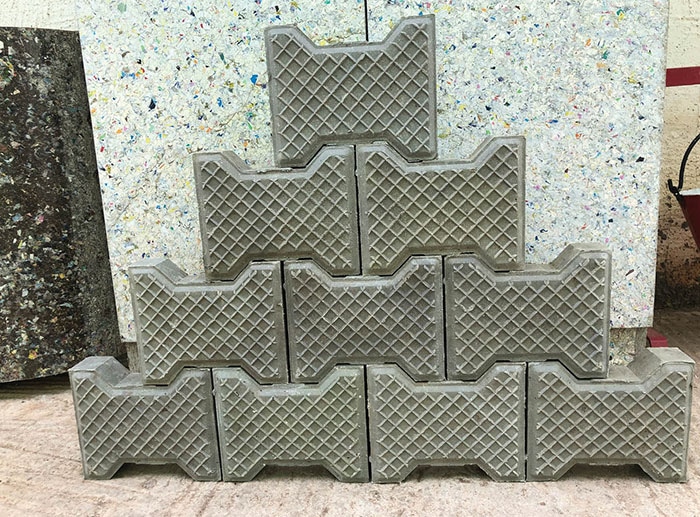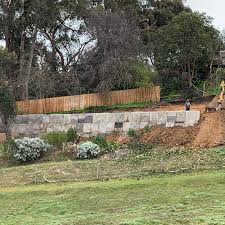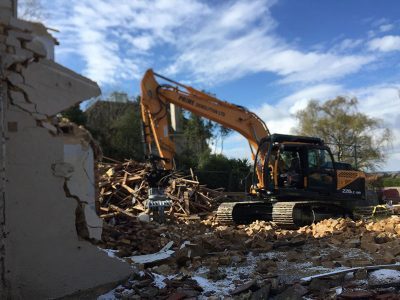
UK demolition firms offer a broad range of services. They can handle both industrial and commercial needs. They also do projects on private buildings and institutions. They are licensed and fully insured making them a good choice for demolition. They only use the highest quality equipment and adhere to best practices to reduce risk for those who work on site.
The UK demolition sector has had a good run over the last few years. The sector has been affected by the global economic downturn and the COVID-19 pandemic. The strength of capital investment markets is crucial for future growth. As the global economy improves demolition companies will be in a position to make new investments and diversify their businesses as well as expand into new markets.
The United Kingdom's number of demolition companies is around 3,616. The services provided by these companies include interior and structural demolishment for private and commercial properties. They can remove hazardous materials, prepare the site for construction and clean it up. They also offer demolition services for governmental agencies and institutional clients.

Keltbray Demolition, McCormack Demolition, and Dem-Master are the UK's top demolition contractors. They are active in the UK, Europe. They have specialized in demolition and dismantling of all kinds of buildings, including factories, commercial and residential, schools, and hospitals. They are accredited by SAFE Contractor.
The latest annual report of Keltbray, released in January, shows that its turnover decreased by PS87.1 million compared with the previous year. Pre-tax profits decreased from PS108.2million down to PS200,000. To address regulatory concerns, it set aside PS6 millions. The company has now restructured its operations into three distinct streams: demolition and dismantling as well as recycling. The company has also restructured inquiries which is a key indicator for profitability.
McCormack Demolition is another top UK demolition company. They work on commercial and industrial properties. To tackle various demolition projects, the firm has invested heavily in excavators or diggers. It also has offices in Bristol and Bath.
Avenir Deconstruction has moved seven places higher in the d&ri100. Its projects include a number of notable landmark works in the capital. They are also involved with oil refinery turnarounds in the Middle East. Lexia Solutions Group Ltd. includes the company. It also provides asbestos removal services.

The latest d&ri100 identifies the top ten demolition companies according to their turnover increase. The firms are split into regions such as London and Manchester. Collectively, the top 10 companies saw a 5% increase of turnover.
There have been many challenges faced by the demolition industry in recent months. One of the biggest was the CMA's investigation into bid rigging. Eight out of ten companies were implicated. The Competition and Markets Authority announced preliminary findings. These findings will have an important impact on UK's industry operating conditions. The final report from the CMA will be released later in this year.
FAQ
How many times should my furnace filter need to be changed?
It all depends on how frequently your family uses your home heating system. You might consider changing your filter less frequently if you are likely to be away from your home for extended periods during the cold months. But if you do not often go outside, it may be possible to wait longer between changing your filter.
A typical furnace filter lasts approximately three months. This means that your furnace filters should be changed every three to four months.
You can also check the manufacturer's recommendations for when to change your filter. Manufacturers recommend changing your filter after each heating season. Other manufacturers suggest waiting until visible dirt builds up.
Can I do the whole renovation myself?
Why pay someone to do it for you when you can do it yourself?
It doesn't matter how much you love DIY, there are times when you simply cannot do it yourself. You might not be able control many of the variables.
You might discover that the wiring in your home is not up to date. In this case, you'll need to hire an electrician to ensure that your electrical system works safely and reliably.
Also, you should consider that some structural damage may not be possible during renovations.
You may not have the proper tools to complete the job. A plumber's snake is an instrument that can be used to unclog pipes.
You must also follow plumbing codes to ensure that a licensed plumber is working on your project.
The bottom line is that you need to know exactly what you are capable of doing before you embark on such a big task.
Ask for assistance from family and friends who have completed similar tasks before if you are uncertain.
They can offer advice about what to do and where to go for more information.
How do I select a competent contractor?
Ask family and friends to recommend contractors. Online reviews are also a good option. It is important to confirm that the contractor that you choose has worked in the same area as you. Check out references and ask for them to provide you with some.
Statistics
- The average fixed rate for a home-equity loan was recently 5.27%, and the average variable rate for a HELOC was 5.49%, according to Bankrate.com. (kiplinger.com)
- It is advisable, however, to have a contingency of 10–20 per cent to allow for the unexpected expenses that can arise when renovating older homes. (realhomes.com)
- Rather, allot 10% to 15% for a contingency fund to pay for unexpected construction issues. (kiplinger.com)
- ‘The potential added value of a loft conversion, which could create an extra bedroom and ensuite, could be as much as 20 per cent and 15 per cent for a garage conversion.' (realhomes.com)
- They'll usually lend up to 90% of your home's "as-completed" value, but no more than $424,100 in most locales or $636,150 in high-cost areas. (kiplinger.com)
External Links
How To
How do I plan for a whole house renovation?
Planning a whole house remodel requires careful planning and research. Before you begin your project, there are many things to think about. The first thing to do is decide what kind of home renovation you want. You can choose from a variety of categories, such as kitchen or bathroom, bedroom, living space, or living room. Once you have decided which category you wish to work in, you will need to determine how much money you have to spend on your project. If you have never worked on homes, it is best to budget at most $5,000 per room. If you have experience, you may be able to manage with less.
Once you have established how much you are able to afford, you will have to decide on how big a job to do. If you have only enough money to remodel a small kitchen, you may not be able add new flooring, countertops, or paint the walls. If you have the money to do a complete kitchen remodel, you will be able to handle almost anything.
Next, find a contractor who is skilled in the type and scope of work you wish to undertake. This will ensure you get quality results and save you a lot of hassle later. Once you have hired a contractor, gather materials and other supplies. You may need to purchase everything from scratch depending on the size and scope of your project. However, there are plenty of stores that sell pre-made items so you shouldn't have too much trouble finding everything you need.
Once you've collected all the materials you will need, you can begin to plan. To begin, draw a sketch of where you would like to place furniture or appliances. Next, plan the layout. Remember to leave enough space for outlets and plumbing. Also, try to put the most used areas near the front door so that visitors can easily access them. Last, choose the colors and finishes that you want to finish your design. Keep your designs simple and in neutral tones to save money.
Now that you're finished drawing up your plan, it's finally time to start building! Before you begin construction, it's important to check your local codes. Some cities require permits. Other cities allow homeowners without permits. Before you can begin construction, remove any walls and floors. To protect your flooring, you will lay plywood sheets. Next, you will nail or screw together pieces wood to create the frame for your cabinets. Finally, attach doors to the frame.
There will be some finishing touches after you are done. You might want to cover exposed pipes or wires. For this, you will use plastic sheeting or tape. You'll also want to hang pictures and mirrors. Just remember to keep your work area clean and tidy at all times.
This guide will show you how to create a functional, beautiful home. It will also save you a lot of money. Now that your house renovation plan is in place, you can get started.